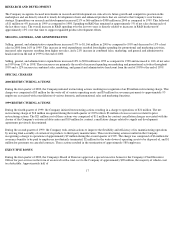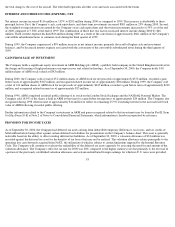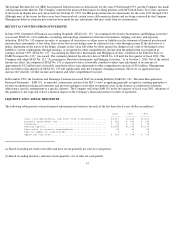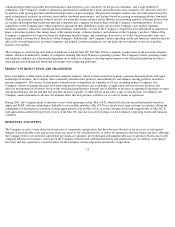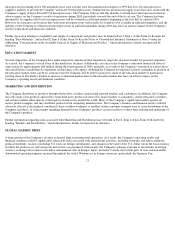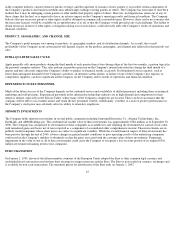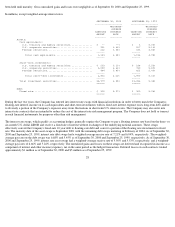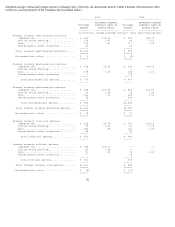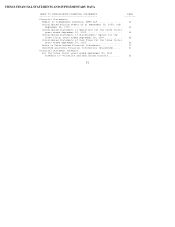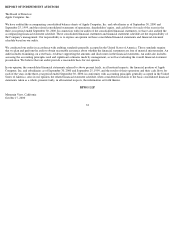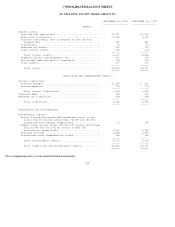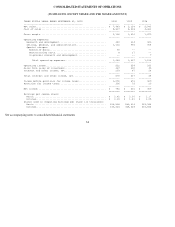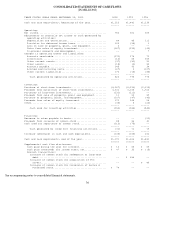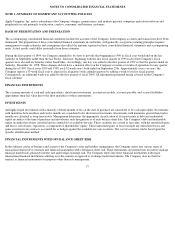Apple 2000 Annual Report Download - page 30
Download and view the complete annual report
Please find page 30 of the 2000 Apple annual report below. You can navigate through the pages in the report by either clicking on the pages listed below, or by using the keyword search tool below to find specific information within the annual report.significantly alter the Company's hedging strategies. However, its application may increase the volatility of other income and expense and other
comprehensive income.
INTEREST RATE RISK
While the Company is exposed to interest rate fluctuations in many of the world's leading industrialized countries, the Company's interest
income and expense is most sensitive to fluctuations in the general level of U.S. interest rates. In this regard, changes in U.S. interest rates
affect the interest earned on the Company's cash, cash equivalents, and short-
term investments as well as costs associated with foreign currency
hedges.
The Company's exposure to market risk for changes in interest rates relates primarily to the Company's investments and long-term debt
obligations and related derivative financial instruments. The Company places its investments with high credit quality issuers and, by policy,
limits the amount of credit exposure to any one issuer. The Company's general policy is to limit the risk of principal loss and ensure the safety
of invested funds by limiting market and credit risk. All highly liquid investments with a maturity of three months or less at the date of
purchase are considered to be cash equivalents; investments with maturities between three and twelve months are considered to be short-term
investments. As of September 30, 2000, substantially all of the Company's investments have maturities less than 12 months.
During 1994, the Company issued $300 million aggregate principal amount of 6.5% unsecured notes in a public offering registered with the
SEC. The notes were sold at 99.925% of par, for an effective yield to maturity of 6.51%. The notes pay interest semiannually and mature on
February 15, 2004.
The following table presents the principal (or notional) amounts and related weighted-average interest rates for the Company's investment
portfolio and its long-term debt obligations. The long-term debt is comprised of $300 million of unsecured notes described above, which
mature in February 2004. The Company's U.S. corporate securities include commercial paper, loan participations, certificates of deposit, time
deposits and corporate debt securities. Foreign securities include foreign commercial paper, loan participation, certificates of deposit and time
deposits with foreign institutions, most of which are denominated in U.S. dollars. The Company's cash equivalents and short-term investments
have generally
27


